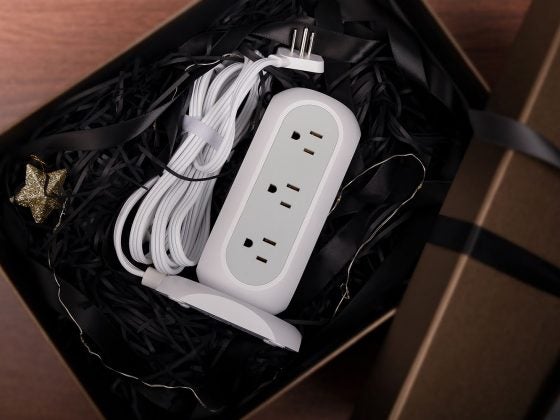Gardening is not only an important part of looking after your property and ensuring that it looks good, while also being very functional for you as a family, but it is also an increasingly popular hobby amongst people of all ages.
Why? Because it is one of the best ways to relax and unwind after a hard day, but more than that, gardening gets you outdoors in the fresh air where you can benefit from the sun’s vitamin D rays, and the soil’s mental health-boosting properties.
If you are currently a keen gardener, or you plan to take it up, technology can be a great boon to you. So, let’s take a look at some of the best high and low-tech tools to help you with your horticultural hobby.
The Timeless Appeal of Traditional Tools
Although the 21st century provides an array of complex machines, certain low-tech items continue to claim an unshakeable spot in the gardener’s tool shed. Pruning shears, for instance, have existed in one form or another for centuries, often featuring a straightforward design that relies on a spring mechanism to help open the blades. This simplicity belies a remarkable effectiveness. Pruning shears allow gardeners to remove unwanted branches, trim shrubs into decorative shapes, and deadhead flowers, all with minimal strain on the hand and wrist. Equally important, these small but mighty shears provide a tactile connection between the gardener and the plant world. Instead of relying on a screen or algorithm, the person performing the cut directly senses each stem’s density and texture, responding with precise pressure and angle.
The classic spade stands as another beloved example of a tool that owes its longevity to its directness of purpose. Whether breaking new ground for a vegetable patch or transferring soil into a wheelbarrow, the spade offers a level of control that machines cannot always replicate. Its simple design, consisting of a sturdy, flat metal blade attached to a wood or composite handle, has remained largely unaltered for hundreds of years. This adherence to tradition speaks to the spade’s unmatched utility. A gardener can feel subtle shifts in soil composition by operating a spade—detecting clay, loam, or sand in ways that a purely mechanical device might not so readily convey.
Watering cans also hold a special place in the hearts of gardening enthusiasts. Modern irrigation systems have their advantages, but nothing replaces the calming, almost meditative act of watering plants by hand. Holding a metal or plastic watering can, feeling its weight diminish as the water flows out, and directing that flow precisely onto the soil fosters an intimate awareness of a plant’s needs. This type of interaction may seem antiquated in an era of digital solutions, yet it offers a unique sense of control and observation. Subtle changes in the leaves or soil moisture level may only be noticed when one is physically engaged with the act of nurturing.

Modern Innovations for Convenience and Efficiency
While the romantic notion of a purely traditional garden retains its allure, technology has undeniably elevated horticulture to a new level of precision and convenience. Soil sensors, for instance, can now gauge pH levels, temperature, and moisture content in real time, transmitting the data to a smartphone application. This innovation takes guesswork out of the picture, making it easier to tailor fertilization schedules and watering regimes to the specific needs of each plant. For gardeners lacking extensive hands-on experience, or for those managing large plots of land, these sensors offer invaluable guidance, helping them make data-driven decisions and avoid common pitfalls such as overwatering or nutrient imbalances.
Smart irrigation systems represent another leap forward in horticultural technology. Equipped with weather-tracking functions and the ability to interpret data from soil sensors, these systems ensure that plants receive exactly the amount of water they require. Gone are the days of flipping a switch and hoping for the best. Today’s sophisticated watering networks can detect rainfall, temperature shifts, and even wind patterns, adjusting themselves accordingly to save water and money. This intelligent approach to watering also reduces the chances of fungal growth and other moisture-related problems, since each plant’s hydration needs are met with near-pinpoint accuracy. Such efficiency fosters both healthier plants and a more environmentally responsible gardening practice.
For many homeowners, maintaining a pristine lawn remains a high priority. The introduction of cordless lawn mowers has revolutionized this task, merging power with freedom of movement. Unlike older models bound to a wall socket or noisy, gas-guzzling engines, these battery-operated machines glide smoothly across the turf without a trailing cord or fumes. They also boast quiet operation, allowing gardeners to tend their lawns without disturbing neighbors or wildlife. Manufacturers frequently incorporate energy-efficient batteries and ergonomic designs, turning the once-dreaded chore of lawn mowing into a more pleasant, streamlined process. The cordless lawn mower exemplifies how technology can accommodate even the most mundane aspects of garden upkeep while respecting environmental concerns.
Bridging the Divide: When High-Tech Meets Handcrafted
For many enthusiasts, the joy of gardening resides in a delicate balance between embracing modernity and cherishing tradition. A gardener might use a smart irrigation system to manage watering while still favoring a simple hoe for weeding around delicate seedlings. This approach illustrates how high-tech and low-tech can co-exist rather than compete. Indeed, each offers benefits that can enhance the other. An automated sprinkler may take care of large swaths of flowerbeds, but a watering can remains indispensable for delicate roses or seedlings that demand extra caution and attention.
In a similar vein, a digital plant identification app can quickly help confirm the name of an unfamiliar weed, yet a durable rake remains the most efficient means of clearing fallen leaves in the autumn. Pairing a sensor that monitors sunlight intensity with a handheld pruning saw exemplifies the same harmony. The sensor can identify if a tree’s canopy is blocking essential light from the plants beneath it, while the saw provides the direct, hands-on process for removing problematic branches. By leveraging both worlds, gardeners enjoy a fuller, richer relationship with their land, guided by intelligence but never forsaking the personal satisfaction of tangible work.
A Lasting Partnership: Technology, Tradition, and the Garden
The contemporary gardener stands at an exciting crossroads, free to employ centuries-old techniques while embracing the sophisticated tools of the present day. This duality encourages a deeper understanding of what gardens truly represent: a balance between nature’s rhythms and human intervention. Technology refines and streamlines tasks, from mowing the lawn with cordless precision to monitoring soil health through real-time data. Low-tech implements like shovels, pruning shears, and watering cans preserve the tactile, intimate relationship with the soil and plants that sparked many a gardener’s passion in the first place.
In the end, both high-tech and low-tech tools serve as vehicles for bringing forth the beauty and bounty of the natural world. Success in the garden—however one chooses to define it—relies on synergy. The gardener’s role is that of a conductor, skillfully orchestrating the interplay of tradition and innovation. By cultivating this blend of old and new, individuals nurture an environment that sustains plant life while fueling their own creativity and knowledge. Gardens, whether they are modest patio spaces or sprawling landscapes, grow vibrant and fruitful when guided by informed minds, compassionate hearts, and tools that reflect the best of both past and future.
The result is an endeavor that transcends mere hobby status. It becomes a lifelong learning experience, sustained by curiosity and underpinned by technology’s ongoing advancements. The ancient act of planting a seed resonates more deeply when one is armed with sensors that validate watering schedules and a sturdy hoe that offers the human touch. Ultimately, this marriage of high-tech and low-tech invites gardeners everywhere to reimagine what it means to cultivate, allowing them to shape their green spaces with confidence, ingenuity, and an abiding respect for the land.

















